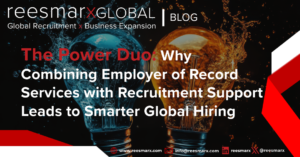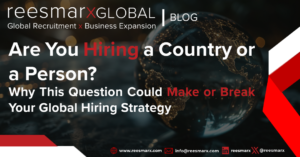In the bustling corridors of modern businesses, a unique symphony plays out daily — the intermingling of different generations, each bringing its distinctive rhythm and melody. Today’s workforce is more generationally diverse than ever, with Baby Boomers, Generation X, Millennials, and Generation Z all sharing office space. This blend offers immense potential but also presents unique management challenges. How do leaders effectively guide such a varied group? The answer lies in understanding and strategically leveraging the strengths of each generation.
Understanding the Generational Mix
Each generation brings its own set of values, work ethics, and expectations:
Gen Z (born after 1996) are true digital natives. A study by Dell Technologies reports that 91% of this generation considers technology a critical factor in job choice. They are not just tech-savvy; they seek purpose, value individuality, and are driven by social causes.
Millennials (born 1981-1996) have reshaped the workplace with their affinity for technology, emphasis on work-life balance, and desire for meaningful work. A Gallup poll highlights that 87% of Millennials rate professional growth and career development opportunities as important to them in a job.
Generation X (born 1965-1980) is often considered the independent, ‘bridge’ generation, highly adaptable and tech-literate but not as digital-native as Millennials and Gen Z. They value stability, are results-driven, and possess strong problem-solving skills.
Baby Boomers (born 1946-1964) bring experience and a strong work ethic. A study by AARP revealed that 65% of workers over 55 are motivated by job enjoyment and satisfaction. They value face-to-face communication and are often driven by loyalty and a commitment to quality.
Effective Communication Across Generations
Communication is vital in a multi-generational workforce. While Gen Z and Millennials might prefer digital communication platforms like Slack or Teams, Gen X and Baby Boomers might lean towards emails or face-to-face meetings. Bridging this gap requires flexibility and an inclusive approach to communication.
Cross-generational mentorship is a powerful tool. For instance, reverse mentoring programs at companies like Procter & Gamble and Cisco Systems have facilitated knowledge exchange between younger and older employees, fostering mutual respect and understanding.

Tailoring Management Approaches
Flexibility in management style is crucial. Leaders should strive to understand individual preferences and adapt accordingly. While a Boomer might appreciate clear hierarchies and defined roles, a Millennial might thrive in a collaborative and less structured environment.
Flexible work arrangements are also vital. Post-pandemic, many organizations have adopted hybrid work models. Deloitte’s research indicates that flexible working arrangements are a key driver in attracting and retaining talent across generations.
Continuous learning is another critical aspect. LinkedIn’s 2020 Workplace Learning Report reveals that 94% of employees would stay at a company longer if it invested in their learning and development. This is especially true for Millennials and Gen Z, who prioritize personal growth and career advancement.
Fostering an Inclusive Workplace Culture
Inclusivity goes beyond just acknowledging differences. It’s about creating a culture where every generation feels valued and heard. Companies like Salesforce have set a precedent in this area by creating an inclusive culture that celebrates diversity in all its forms, including generational diversity.
Inclusive decision-making is equally important. At organizations like Accenture, inputs from employees of all ages are valued, leading to more innovative and well-rounded solutions.

Overcoming Challenges
Stereotypes can be a significant hurdle. It’s crucial to avoid generalizations like “Millennials are entitled” or “Boomers are resistant to change.” Instead, focus on individual strengths and foster a culture of mutual respect.
Conflict resolution is another area to focus on. Conflicts can be turned into productive discussions by encouraging open dialogue and understanding differing viewpoints.
Leaders are vital in setting the tone for an inclusive and harmonious workplace. Leaders like Satya Nadella of Microsoft exemplify this, emphasizing empathy and collaboration across all levels of the organization.
Conclusion
Managing a multi-generational workforce is challenging, but the rewards are manifold. By understanding the unique attributes of each generation, communicating effectively, tailoring management approaches, fostering an inclusive culture, and overcoming stereotypes, leaders can harness the full potential of their diverse teams. This approach enhances productivity and creates a dynamic and harmonious work environment.
We invite you to share your experiences or strategies in managing a diverse generational mix. How have you navigated these challenges in your organization? Join the conversation, and let’s learn from each other’s experiences.
Contact reesmarxGLOBAL Today
reesmarxGLOBAL is your dedicated partner in navigating the intricate terrain of global talent acquisition. Our legacy of excellence in recruitment and executive search empowers businesses to secure top-tier talent, even in the face of economic challenges.
We invite you to reach out to us today and embark on a journey to redefine your recruitment strategies in an ever-evolving world. Our seasoned experts are poised to assist you in overcoming the hurdles posed by economic uncertainties. Let’s embark on this journey together towards a future of talent abundance and business success. Contact us now.






